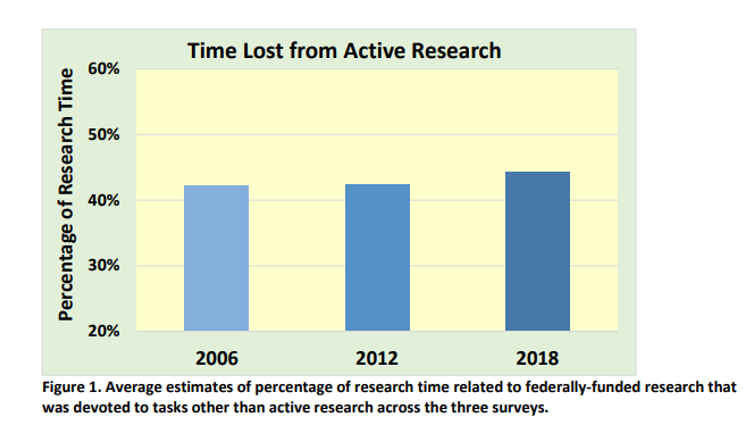Reducing Bureaucracy
Numerous federal surveys over the past two decades have shown that federally-funded scientists spend too much time on bureaucratic compliance, rather than actual science.
The most recent survey had responses from 11,167 principal investigators on federal research grants. It found that “almost half of their available research time for federal projects had to be allocated to fulfilling requirements instead of focusing on the content of their research projects.” Even worse, “the trend seems to be that time taken from research by requirements is increasing, not decreasing.”

What exactly are scientists doing here, instead of active research?
For any given federal grant, the burden of bureaucracy arises in several ways. First, scientists have to spend an inordinate amount of time on preparing a proposal for the grant itself. The NIH’s guide to preparing a proposal is 157 pages long (!), which is probably why NIH-funded scientists occasionally say things like this:

Then, researchers also reported having to spend time keeping up with federal requirements as to budgets/finances, personnel, monitoring subawards, managing data, and reporting on how they spent their time. For many researchers who work either with animals or human subjects, it took a great deal of time to comply with the ethical review boards.
To be clear, some level of bureaucracy and oversight is a good thing. It’s not as if we’re going to hand out billions of dollars in federal funding every year without knowing how it was spent, and whether the research was ethical and well-managed.
But the burden of bureaucracy doesn’t have to be nearly half of scientists’ time.
That is simply too much.